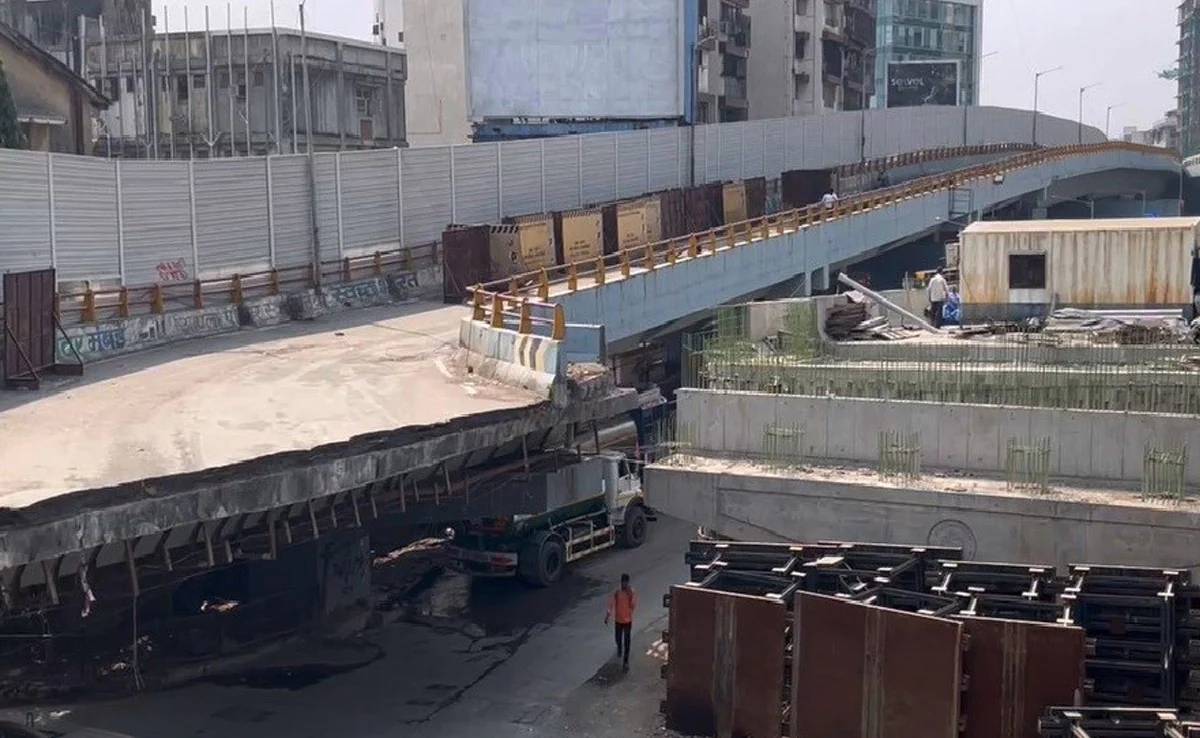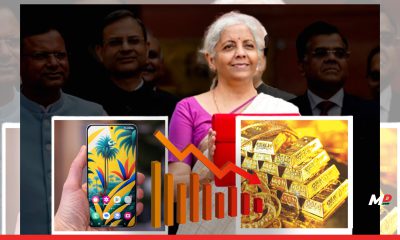Published
5 months agoon

Imagine this: you’ve been eagerly awaiting the opening of a new bridge that promises to ease your daily commute and reduce traffic congestion. Finally, the day arrives, and you excitedly make your way towards the bridge, only to find out that it doesn’t align with the flyover you used to take. Frustration sets in, and you’re left wondering how such a glaring oversight could occur.
This is precisely the predicament faced by commuters in Andheri, Mumbai, with the recently opened Gokhale Bridge, where even after waiting years for it, the dream of the bridge opening remains one too far for Mumbai’s citizens.
The Gokhale Bridge: A Brief History
To fully grasp the significance of the Gokhale Bridge controversy, it’s essential to understand its history. The bridge has been a key east-west connector in the western suburbs of Mumbai since the 1960s. However, in July 2018, a portion of the bridge collapsed, tragically resulting in five deaths. Subsequent structural audits led to the decision to demolish the old structure and construct a new bridge.
The Gokhale Bridge: An Engineering Marvel
The new Gokhale Bridge, a 90-meter structure connecting the eastern and western parts of Andheri, was completed within an impressive 15 months. The Brihanmumbai Municipal Corporation (BMC) hailed it as an “engineering marvel.” However, the celebrations were short-lived as they quickly noticed a significant problem – the bridge did not align with the adjoining CD Barfiwala Flyover.
The Non-Alignment Predicament
The non-alignment of the Gokhale Bridge and the Barfiwala Flyover has resulted in a major inconvenience for motorists traveling towards Juhu. Previously, they could take the flyover, but now they are forced to navigate through SV Road in Andheri Junction. This sudden change in the commuting route has caused frustration and traffic congestion in the area.
Understanding the Cause of Non-Alignment
Citizens have raised concerns about the non-alignment, attributing it to “improper planning.”
However, administrative agencies involved in the construction maintain that they followed all relevant guidelines. According to the authorities, the vertical alignment of the new bridge was increased as per the Indian Railways’ guidelines. This increased alignment was necessary due to the ongoing upgrade of railway lines across the country.
Height Mismatch as the Culprit
The Barfiwala Flyover, which predates the Gokhale Bridge, did not exist in the blueprint shown to the railways for alignment. The height mismatch between the two structures is a direct result of the Indian Railways’ policy that mandates an additional two meters in height for new railway overbridges (ROBs). This safety measure is crucial, considering the high-speed trains that run on these tracks. The older Gokhale Bridge, constructed in the 1960s, needed an upgrade to meet modern requirements.
Proposed Solutions: Merging the Bridges
The BMC has assured commuters that the two bridges will be merged by the end of the year, eliminating the need for any demolition work. P Velrasu, the additional municipal commissioner responsible for the construction project, explains that the BMC’s plan is to create a new ramp to merge the two bridges. However, there are concerns about the steepness of the ramp and its potential danger to motorists.
Expert Intervention: Seeking Alternative Solutions
To address the non-alignment issue, the BMC has enlisted the expertise of the Indian Institute of Technology Bombay (IIT-B) and Veermata Jijabai Technical Institute (VJTI). These institutions have been tasked with creating alternative solutions to realign the Gokhale Bridge with the Barfiwala Flyover. A technical committee of experts from IIT-B and VJTI will submit a report outlining possible approaches. The BMC will then make an informed decision on the best course of action.
The Impact on Commuters
While the authorities work towards resolving the non-alignment issue, commuters bear the brunt of the inconvenience. Nitin Killawala, an architect and Juhu resident, highlights the traffic congestion caused by the absence of the Barfiwala Flyover. He believes that alternative plans should have been in place to merge the two bridges seamlessly. Other residents opine that it would have been better to wait until all six lanes of the new bridge were ready before opening it to the public.
A Bridge to a Better Future
The Gokhale Bridge controversy serves as a reminder of the challenges faced in infrastructure development. While the bridge itself is an engineering marvel, the non-alignment issue has exposed flaws in the planning and execution process. However, with the BMC’s commitment to merging the bridges and expert
intervention from IIT-B and VJTI, a solution is on the horizon. Until then, commuters in Andheri must navigate the inconvenience caused by the non-alignment, with the hope that a better future lies just around the corner.


Rs 10.7 Lakh Crore Lost in a Day: Will You Still Buy Gold After Nirmala Sitharaman’s Duty Cut?


Here’s why Elon Musk might need India more than he cares to admit


Why is Trump dodging a face-off with VP Kamala Harris?


CXO Chatter, with Kavita Singh, CHRO of Runaya


On’s LightSpray tech can make spray-on sneakers in just 5 minutes


Budget 2024: Focus Shifted from Suit-boot ki Sarkar to ‘Annadata’

